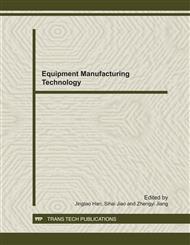p.575
p.580
p.584
p.589
p.592
p.596
p.601
p.606
p.610
Mid-Profile Design and Numerical Simulation for Supercavitating Vehicle
Abstract:
Based on elliptic curve equation and G.V.Logvinovich cavity geometrical equation, the mid-profile of supercavitating vehicle was researched. The author uses Navier-Stokes equation and k-ε turbulence equation to simulate the designed geometry shape depending on structure grid. The beneficial results show that the mid-profile design for supercavitating vehicle is able to integrate and control the partial attached cavitating flow, and enable the cavity proximate shape to the elliptic shape. As a result, the cavitating reflow phenomenon influenced by tail nozzle contraction at the rear of the supercavitating vehicle could be mitigated, and in a certain range of curvature, the drag reduction performance is better than that of the cylindrical method. The research is able to effectively increase the fullness of the supercavitating vehicle in the mid-profile, and so it is quite superiority.
Info:
Periodical:
Pages:
592-595
Citation:
Online since:
December 2011
Authors:
Price:
Сopyright:
© 2012 Trans Tech Publications Ltd. All Rights Reserved
Share:
Citation:


